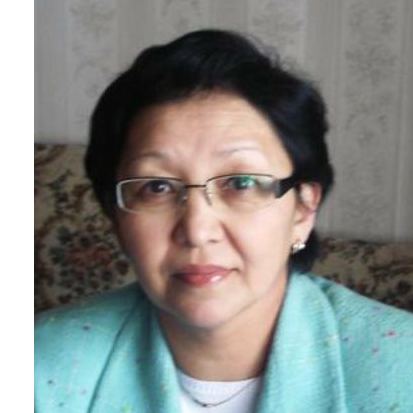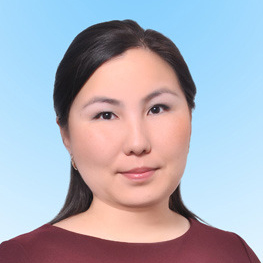Anisotropy of the surface of cubic body-centered crystal lattices.
DOI:
https://doi.org/10.31489/2021No1/9-15Keywords:
anisotropy, metal, surface energy, crystal, nanostructure.Abstract
In the work of Shebzukhova and Arefieva, by the method of electronic-statistical calculation of the anisotropy of the surface energy of metals, a method for estimating the work function of electrons from a metal was determined. The surface energy and electron work function of four main faces of cadmium and zinc crystals and five faces of mercury are estimated. In the work of Bokarev, the anisotropy of the surface energy of single crystals was calculated from the model of coordination melting of crystals. Based on experimental studies and theoretical calculations, it is shown that the model of coordination melting of crystals unambiguously links the physicochemical properties of the surface of single crystals with their crystal structure. In our proposed empirical model, not only the anisotropy is calculated, but also the thickness of the surface layer of the metal. It is shown that the thickness of the surface layer is determined by one fundamental parameter - the molar (atomic) volume, which periodically changes in accordance with the table of D.I. Mendeleev. It is shown in the work that the work function of electrons changes proportionally with a change in the surface energy of the metal. This means that the device we have developed can be used to measure the state of the metal surface and its anisotropy.
References
"1 Yurov V.M., Oleshko V.S. The impact of the environment on the contact potential difference of metal machine parts. Eurasian Physical Technical Journal, 2019. Vol.16, No.1(31), pp. 99 – 108.
Yurov V.M., Makeeva O.V., Oleshko V.S., Fedorov A.V. Development of a device for determining work electron output. Eurasian Physical Technical Journal, 2020, Vol.17, No.1 (33), pp. 127 – 131.
Shebzukhova I. G., Arefieva L. P. Anisotropy of surface energy and the electron work function IIB of metals.Journal of technical physics, 2019, Vol. 89, Issue. 2, pp. 306 – 309.
Shebzukhova I. G., Arefieva L. P. Estimation of polarization and dispersion corrections to the surface energy of the faces of metal crystals.Physicochemical aspects of studying clusters, nanostructures and nanomaterials, 2020, Issue 12, pp. 319 – 325.
Bokarev V.P., KrasnikovG.Ya. Anisotropy of physicochemical properties of single-crystal surfaces.Electronic technology. Series 3. Microelectronics, 2016, No. 4(164), pp. 25–30.
Bochkarev V.P. Development of physical and chemical principles for assessing the effect of surface energy on the properties of materials and processes for microelectronic technology. Doctor Dissert. of Techn. Scinc. degree, Moscow, 2020. - 299 p.
BernsteinM.L., RakhshtadtA.G. Element properties. Part 1. Physical properties. Moscow, 1969, 600 p.
Jian Wang, Shao-Qing Wang. Surface energy and work function of FCC and BCC crystals: Density functional study.Surface Science, 2014, Vol. 630, pp. 216-224.
Vladimirov A.F. Anisotropy of the work function of the electron and reticular compaction of ""loose"" faces of metal crystals.Surface, X-ray, synchrotron and neutron research, 1999, No. 9, pp. 58 – 66.
Skriver H.L., Rosengaard N.M. Surface energy and work function of elemental metals.Physical Reviev B, 1992, Vol. 46, No. 11, pp. 7157 – 7168.
Yurov V.M., Guchenko S.A., Laurinas V.Ch. Surface layer thickness, surface energy, and atomic volume of an element. Physicochemical aspects of studying clusters, nanostructures and nanomaterials, 2018, Vol. 10, pp. 691-699.
ArutyunovK.Yu. Quantum size effects in metallic nanostructures.RAS reports. 2015. No. 3(28), pp. 7 – 16.
Oura K., Lifshits V.G., Saranin A.A., t al. Katayama M. Introduction to surface physics. Moscow, 2006, 490 p.
Uvarov N.F., Boldyrev V.V. Size effects in the chemistry of heterogeneous systems.Uspekhikhimii, 2001, Vol. 70(4), pp. 307 – 329. [in Russian]
Gusev A.I. Nanomaterials, nanostructures, nanotechnology. Moscow, 2005, 412 p.[in Russian]
Andrievsky R.A., Ragulya A.V. Nanostructured materials. Moscow, 2005, 192 p.[in Russian]
Suzdalev I.P. Nanotechnology: physical chemistry of nanoclusters, nanostructures and nanomaterials. Moscow, 2006, 592 p.[in Russian]
Kiselev V.F., Kozlov S.N., Zoteev A.V. Fundamentals of Solid Surface Physics. Moscow, 1999, 284 p.
Gleiter H. Nanostructured materials: basic concepts and microstructure. Acta mater. 2000, Vol.48, pp. 1 – 29.
"















